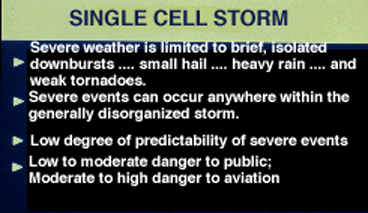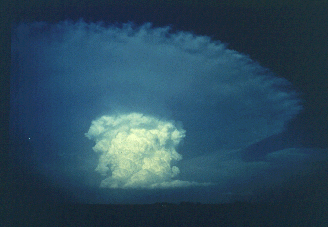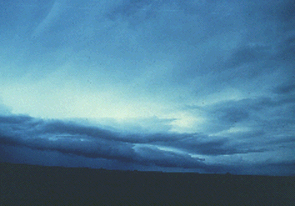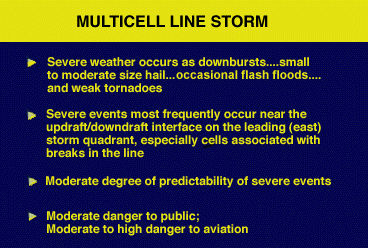|
| |||||||||||||||||||||||||||||||||||||||||||||||||||||||||||||||||||||||||||||||||||||||||||||||||||||||||||||||||||||||||
| |||||||||||||||||||||||||||||||||||||||||||||||||||||||||||||||||||||||||||||||||||||||||||||||||||||||||||||||||||||||||
 |


Photograph by: NSSL

Photograph by: Doswell |
Multicell line storms are better known as squall lines, which is the term that we will use from here on. The former name is for positioning squall lines in the thunderstorm spectrum. |


Photograph by: Moller


Photograph by: Moller
 |
The flanking line of the supercell behaves differently than that of the multicell cluster storm, in that updraft elements usually merge into the main rotating updraft and then explode vertically, rather than develop into separate and competing thunderstorm cells. In effect, the flanking updrafts "feed" the supercell updraft, rather than compete with it. |







